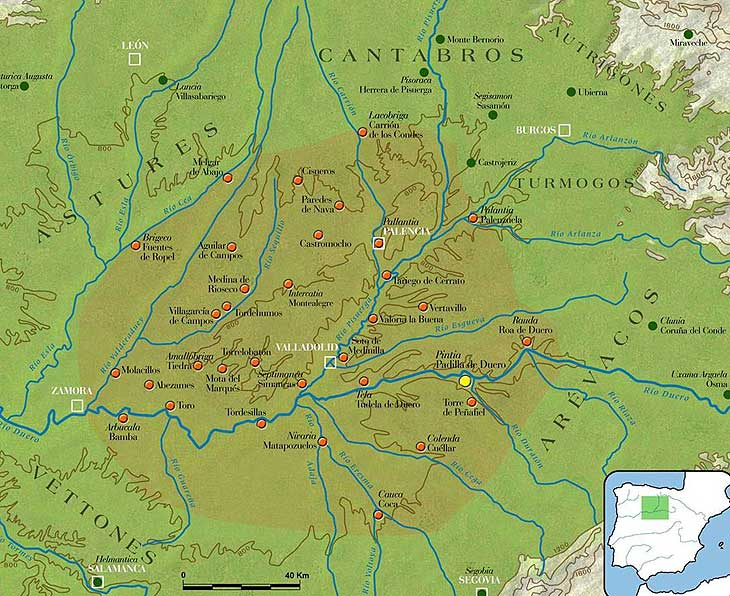
Vaccean territory
Where were the Vaccean settled?
The Vacceans were the pre-Roman people who lived in the middle-Duero valley region, which occupies around 45,000 square kilometers, or half of modern-day Castilla y León. This territory includes all of the Valladolid province, and many of the region's other provinces except for Soria.
The Vaccean Region, to use a term coined by Wattenberg, includes the Tierra de Campos, the Montes Torozos, the Cerrato Valley and the Duero's southern landscape. This area's western border are the Cea and Esla rivers, which separated the Vacceans from the Astures people. An imprecise line between the Esla and Pisuerga rivers to the north of Carrión de los Condes marked the border with the Cantabrians. To the east, following the Pisuerga river until crossing the Arlanza River, lived the Turmogos, and farther to the southeast lived the Arevacos, who lived in Clunia (modern-day Coruña del Conde in Burgos) while Rauda (Roa in Burgos) was Vaccean. To the south, the border with the Vettons is less understood, but it's thought to follow the Duero River. Nevertheless, historians know that Vaccean cities existed to the south of the river: Cuéllar (perhaps the ancient Colenda), Cauca (now Coca), both in Segovia; Nivaria (perhaps in modern-day Matapozuelos) and Tordesillas, in Valladolid; and Arbucala (Bamba), in Zamora.

Map of Vaccean territory





